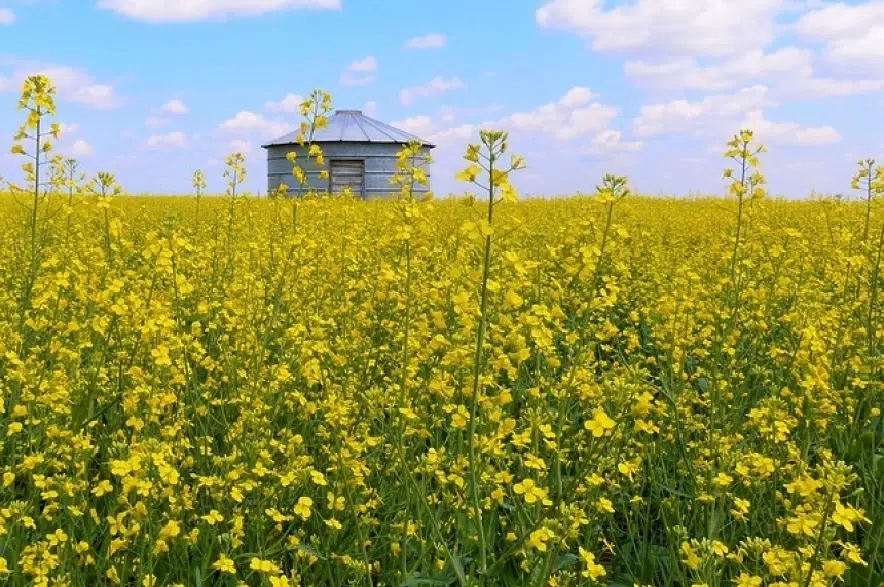Crops across Saskatchewan are progressing quickly, thanks to warm temperatures and widespread rain, but more moisture is needed in many parts of the province.
That’s according to the weekly Crop Report from the Saskatchewan Ministry of Agriculture.
The northern parts of the province received more rain than the southern regions over the past week, with the Odessa area recording the largest accumulation, with 42 millimetres. Prince Albert and Turtleford weren’t far behind, seeing 40 millimetres and 37 millimetres respectively.
Around the province, the report said topsoil moisture is rated at one per cent surplus, 42 per cent adequate, 42 per cent short and 15 per cent very short. For hay and pasture land, moisture was rated at 36 per cent adequate, 42 per cent short and 21 per cent very short. The driest conditions were found in the southwest and west-central regions this week, the report noted.
“The sight of yellow canola and green wheat fields is now prominent on the landscape across Saskatchewan,” the report read.
“Sixty per cent of canola is in the flowering stage.”
More than half (56 per cent) of the year’s flax crop is at the stem extension stage, the report indicated. Meanwhile, 51 per cent of the fall cereal crop is heading out, with 36 per cent at the dough stage. Spring cereals are seeing 43 per cent of the crop heading out, while pulses are in different stages around the province.
Scattered hailstorms, heat and wind caused some crop damage this week, the ministry said, with plow winds causing concern in the north. In other areas, crop damage has been caused by gophers, grasshoppers and other insects, though the rodents are the primary concern. Meanwhile, some crop diseases are beginning to show up after wet and humid conditions in some areas.
“Producers are busy haying and spraying both insecticides and fungicides this week,” the report read. “They are also scouting their fields and hoping for additional moisture to ensure proper crop development.”
Farmers are making good progress with haying, with 48 per cent of the hay crop cut for the first time this year. According to the report, the first cut yielded hay of good-to-fair quality, with many producers hoping for a good-quality second cut.
Pasture conditions were rated as 36 per cent good, 32 per cent fair and 20 per cent poor.







